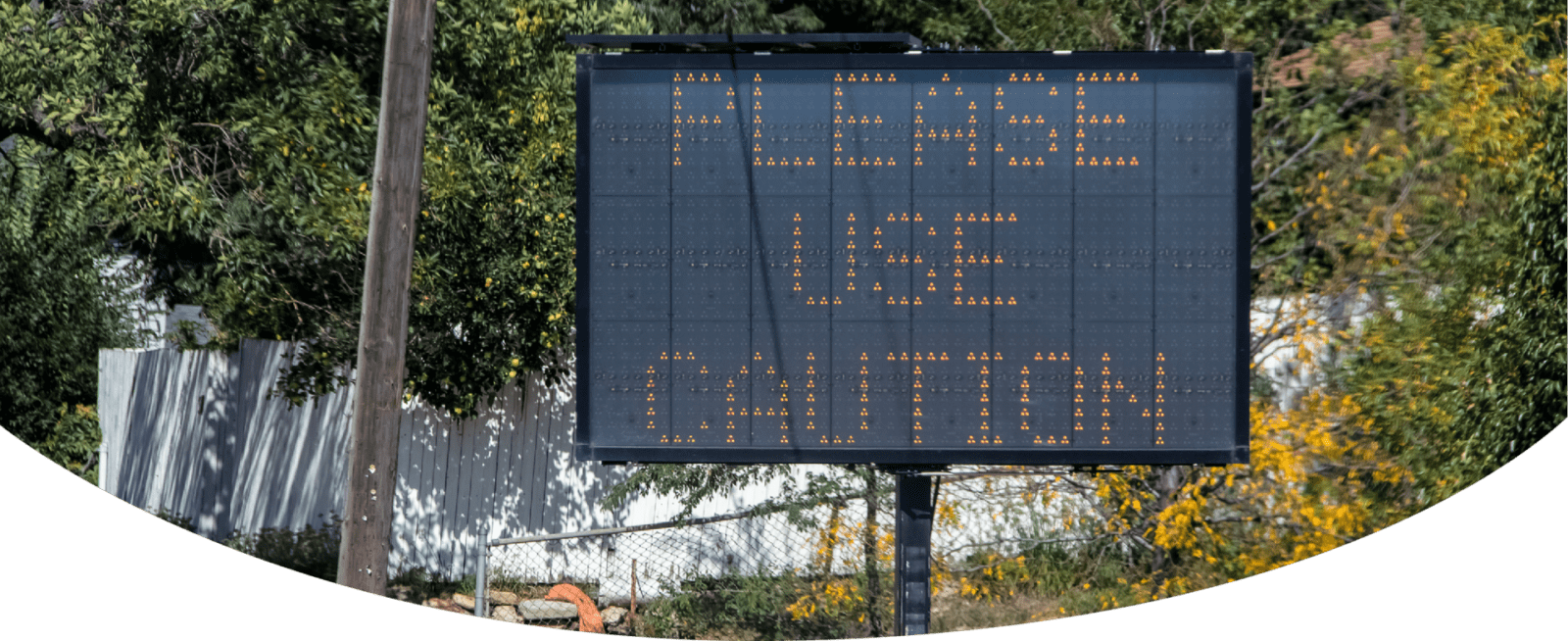
Construction projects come with a myriad of challenges, one of which is ensuring the safety of workers and the public in and around the site. Temporary signs play a pivotal role in ensuring safety, efficiency, and smooth operational flow on the site. From warning pedestrians to directing heavy machinery, these signs are the unsung heroes of every construction area.
At National Capital Industries, we understand the importance of work zone safety and the role that temporary signs play in achieving it. They’re critical communication tools for your crew, the public, and all the moving parts within a construction zone. From the smallest directional sign to the most prominent arrowboard or message sign, each plays a crucial role in construction safety.
As a trusted supplier of safety equipment, building materials, and construction products, we have extensive expertise in providing solutions that make work zone safety simple and accessible for contractors across the Washington DC, Virginia, Delaware, and Maryland areas. So, let’s delve into the world of temporary construction signs.
When you take a moment to consider the intricacies of a construction site, the significance of temporary signs becomes increasingly apparent. They serve as silent instructors on the ground, mitigating any potential traffic hazard, ensuring the safety of the crew, and maintaining orderly pedestrian and vehicular traffic. Without these unassuming guides, a construction site can quickly descend into chaos.
Let’s uncover some of the most common types of temporary signs that grace our construction sites:
While the world of construction signs is more expansive than this list, these are some of the most common types you will find at a typical construction site. They work together, shaping the environment of the site, making it safer and more efficient for everyone involved. From the smallest sign to the largest arrowboard, every piece of signage can be crucial for any project.
When it comes to temporary signs used in construction, complying with government and municipal regulations is crucial. These regulations ensure that signs are properly used, maintained, and positioned to maximize safety and minimize distractions or obstructions. Each jurisdiction has specific guidelines that contractors and construction companies must adhere to including which signs can be used and even where and how these signs can be used.
We specialize in serving contractors in the Washington DC, Virginia, Delaware, and Maryland areas. Having worked extensively with government and municipal contracts, we have a sound understanding of the regulations in these jurisdictions. This allows us to provide compliant signs as well as accurate and valuable guidance to contractors in these areas. We work heavily with municipal contracts and can adhere to many federal contracts.
Temporary signs must meet certain criteria regarding their size, height, and placement to ensure optimum visibility and effectiveness. Each state and/or jurisdiction has its own regulations depending on the jurisdiction and the specific purpose of the sign.
By partnering with NatCap, you can rest assured that you are not only getting top-quality temporary signs for your construction project but also expert assistance in navigating the regulatory landscape. We are committed to simplifying the process and ensuring that your construction site adheres to all necessary guidelines and standards.
Some key regulations concerning temporary signage in construction include:
Understanding and complying with these regulations can seem overwhelming, but it doesn’t have to be. At National Capital Industries, we know the ins and outs of these rules like the back of our hand. We’re here to help you navigate this complex regulatory landscape, ensuring that your construction site is safe, compliant, and efficient.
With a reputation built on decades of experience in supplying safety equipment and construction materials, National Capital Industries has developed a deep understanding of work zone safety. Our team is briefed and ready to help with all signage needs and regulations, making sure your construction sites are as safe and efficient as possible.
Our strength lies in our wide array of high-quality signs, covering all your needs from construction signs, portable signs, directional signs, arrowboards, and more. But our offerings do not stop at product variety. We provide signs made from durable materials designed for the harshest conditions. Our signs not only meet regulatory standards for maximum size, square feet, and maximum height but exceed expectations in their durability and visibility.
In a nutshell, choosing National Capital Industries for your temporary signage needs means opting for quality, compliance, and peace of mind. It means working with a partner who truly understands your needs and works tirelessly to meet them. So, the next time you embark on a construction project, remember: NatCap is here to make work zone safety simple and accessible for you. Contact us today for additional information on how we can assist in your upcoming projects.